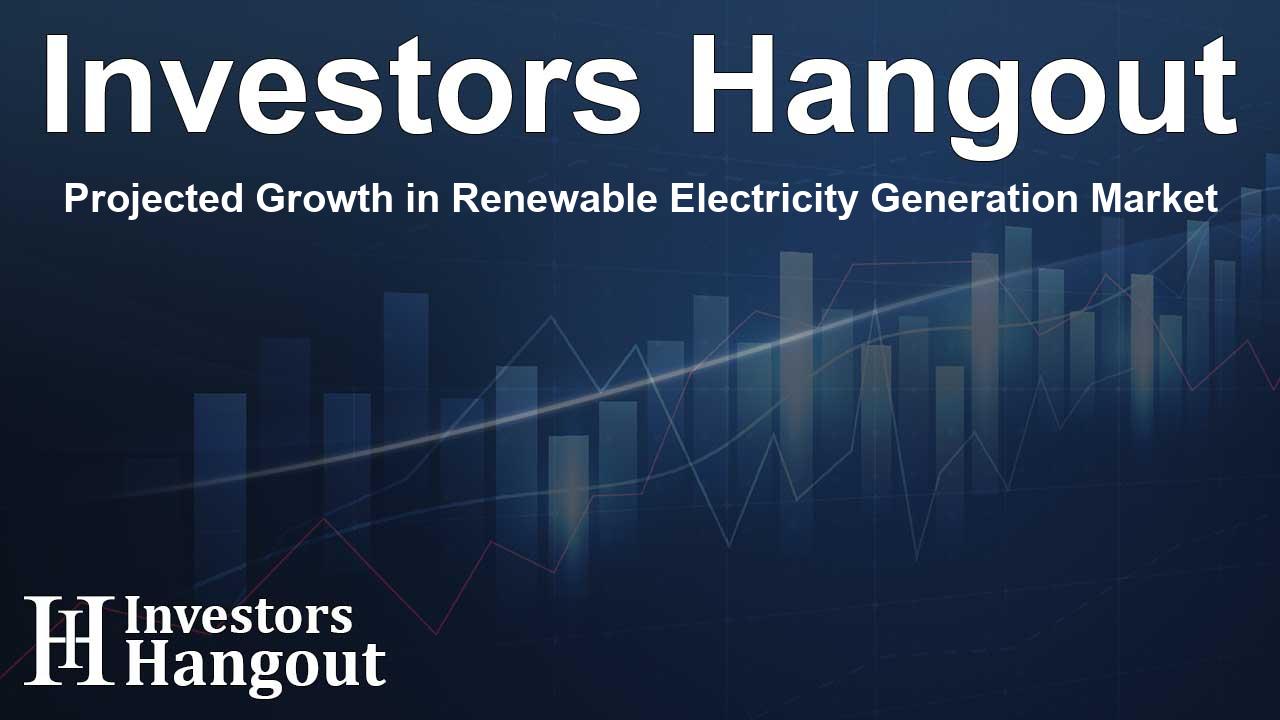Projected Growth in Renewable Electricity Generation Market

Forecast for Renewable Electricity Generation Market
The renewable electricity generation market is undergoing a significant transformation, poised to increase by USD 215.77 billion from 2024 to 2028, as outlined by recent reports. This growth is anticipated to occur at a robust compound annual growth rate (CAGR) of 11.5%. A major catalyst for this expansion is the introduction of tax incentives aimed at promoting renewable energy projects. Initiatives for integrating renewable energy sources, particularly solar and wind, with advanced storage solutions are empowering industry growth.
Market Drivers Fueling Growth
Importance of Renewable Integration
The integration of renewable sources like solar and wind with energy storage systems is emerging as a critical trend. By addressing the intermittent nature of these energy sources, companies can ensure more reliable electricity supply. A notable example is the Green River Energy Center, which showcases a 400 MW solar production capacity paired with a 1,600 MWh battery storage system. Such projects are essential for enhancing grid reliability and stability, thus reinforcing their significance within the renewable energy landscape.
Global Initiatives and Market Contributions
Moreover, large-scale initiatives such as the European Bank for Reconstruction and Development’s commitment to adding 15 GW of renewable energy capacity significantly underpins this market shift. By supporting policies that facilitate the clean energy transition, these programs aim to reduce carbon emissions and enable energy security. This growing ability to store energy effectively also addresses the variability issue associated with renewable energy, fortifying the sector's future.
Challenges Facing the Renewable Energy Sector
Infrastructure Investment Hurdles
Despite many positive developments, the renewable electricity generation sector grapples with significant challenges. High initial costs for infrastructure and technology development, especially for geothermal and ocean energy projects, remain a barrier. Unique requirements for specialized equipment and ongoing maintenance have proven demanding, complicating investments. Potential investors often face hesitations due to perceived risks, such as uncertain regulatory frameworks and the scalability of technologies.
Addressing Regulatory Challenges
Furthermore, regulatory obstacles complicate the progress of these projects. Coordination among multiple government agencies can lead to delays and perplexing permitting requirements, which in turn escalate the overall costs and complexity of implementation. Bridging these gaps is essential for truly harnessing the growth potential of geothermal and ocean energy, which could contribute remarkably to the global energy mix.
Market Segmentation and Insights
The renewable electricity generation landscape can be segmented into various categories based on type, end-user, and geography, offering diverse pathways for growth. Each segment contributes uniquely to the overarching goal of increasing renewable energy utilization and reducing dependency on fossil fuels.
Key Types of Renewable Energy
The primary types include solar, wind, hydropower, and biomass, each demonstrating significant growth potential. Solar energy generation continues to expand, supported by technological advancements and cost-effectiveness. Many projects, including those in Europe, are now harnessing solar potential alongside energy storage solutions to create a sustainable ecosystem.
Growth Across Various Regions
From a geographical perspective, regions such as APAC, Europe, and North America are leading in renewable energy investments, significantly shaping their energy landscapes. Efforts in these areas not only support local economies but also align with global sustainability goals by minimizing carbon footprints.
Conclusion: The Path Ahead
As the renewable electricity generation market continues to evolve, the intersection of tax incentives, innovative technologies, and regulatory support will critically determine its trajectory. With many companies adapting to this dynamic landscape, we can expect significant advancements in sustainable energy practices that will shape the future of electricity generation.
Frequently Asked Questions
What is the expected growth of the renewable electricity generation market?
The market is projected to grow by USD 215.77 billion from 2024-2028.
What are the main drivers for this growth?
Tax incentives for renewable projects and the integration of renewable energy sources with storage systems are key drivers.
What are the major challenges impacting the market?
High initial costs for infrastructure and technology, as well as regulatory hurdles, pose significant challenges.
Which regions are leading in renewable energy investments?
APAC, Europe, and North America are at the forefront of renewable energy investments.
How does energy storage influence renewable energy?
Energy storage addresses the intermittent nature of renewable sources, promoting consistent electricity supply and grid reliability.
About The Author
Contact Addison Perry privately here. Or send an email with ATTN: Addison Perry as the subject to contact@investorshangout.com.
About Investors Hangout
Investors Hangout is a leading online stock forum for financial discussion and learning, offering a wide range of free tools and resources. It draws in traders of all levels, who exchange market knowledge, investigate trading tactics, and keep an eye on industry developments in real time. Featuring financial articles, stock message boards, quotes, charts, company profiles, and live news updates. Through cooperative learning and a wealth of informational resources, it helps users from novices creating their first portfolios to experts honing their techniques. Join Investors Hangout today: https://investorshangout.com/
The content of this article is based on factual, publicly available information and does not represent legal, financial, or investment advice. Investors Hangout does not offer financial advice, and the author is not a licensed financial advisor. Consult a qualified advisor before making any financial or investment decisions based on this article. This article should not be considered advice to purchase, sell, or hold any securities or other investments. If any of the material provided here is inaccurate, please contact us for corrections.
